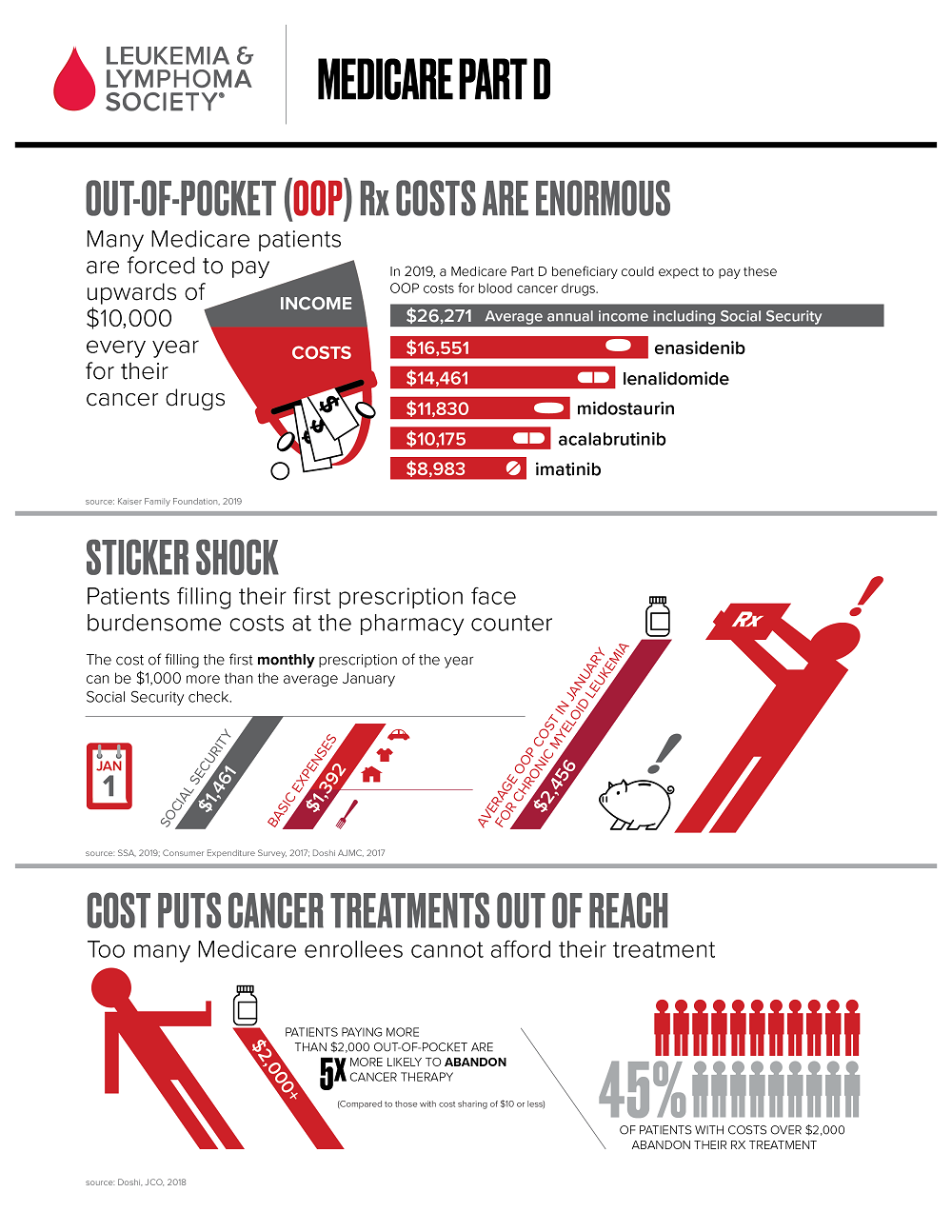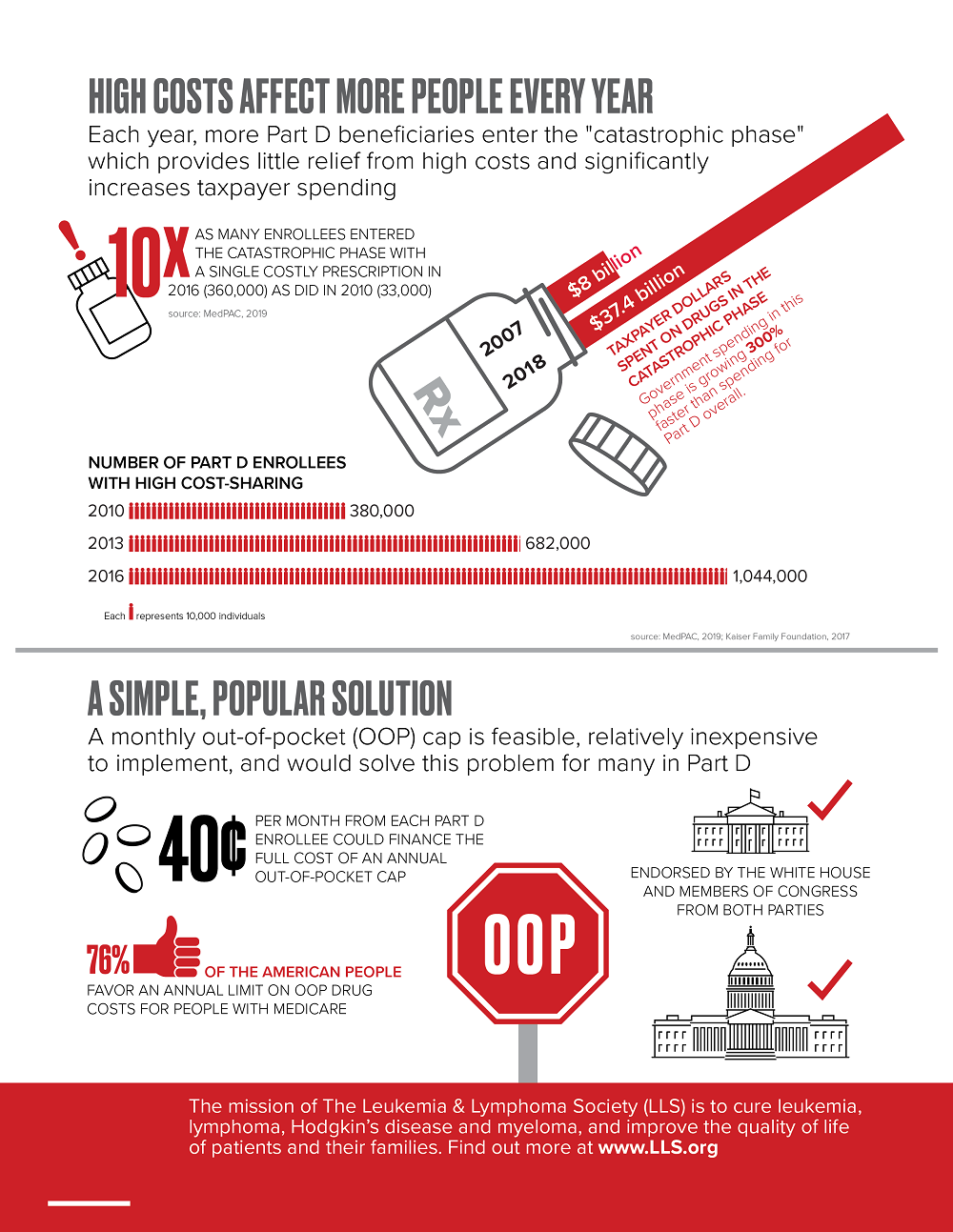Protecting Patients in Medicare From High Costs
ACT NOW: Tell lawmakers it's time to fix Medicare Part D and end limitless costs for blood cancer patients.
High upfront, out-of-pocket costs threaten Medicare enrollees who rely on specialty drugs to live healthy, productive lives. Fortunately, the White House and members of Congress from both parties actually agree: We need to cap Medicare Part D costs and let seniors spread their costs throughout the year.
Read our new reports:
- "Cancer Patients Face High Healthcare Costs in Medicare: When Confronted with High Out-of-Pocket Costs, Cancer Patients Face Difficult Financial Decisions -- and Forgo Treatment"
- "Fixing Medicare Part D: How a Patient-First Approach to Out-of-Pocket Costs Will Bring Treatments Within Reach"
The problem
Today, many blood cancers can be managed as chronic conditions if patients have access to oral medication they take daily. Unfortunately, these specialty drugs may be extremely expensive.
Medicare patients who depend on these drugs face potentially limitless out-of-pocket costs. Why? Patients must pay thousands of dollars out-of-pocket before hitting their “catastrophic” limit in Medicare Part D, the part of the Medicare program that provides a prescription drug benefit. At that point, patients must pay 5% of the cost of drugs. That rate may seem small, but it can add up to thousands of dollars every year for patients, many of whom live on fixed incomes. Some blood cancer drugs cost Medicare Part D patients as much as $16,000 out-of-pocket each year. That amounts to more than half of the income of the average Medicare patient.
And if that’s not bad enough, patients’ bills are frontloaded at the start of each year, when the clock resets on their catastrophic limit. That means the first prescription fill of January could cost patients $2,000-$3,000, creating a major barrier to care.
Today, well over 1 million patients have high cost-sharing in Medicare Part D, up from 380,000 a decade ago. Every day, more and more patients struggle with the challenge of drug costs that are out of reach. Without action, this problem will continue to worsen.
Why does it matter? Simply put: lives are at stake. Patients who must pay at least $2,000 out-of-pocket for their cancer care are five times more likely to abandon their treatment. Seniors shouldn’t have to make the gut-wrenching decision between paying for drugs they need to survive and paying for necessities like groceries or rent. Learn more about the blood cancer cost burden and treatment rates in our infographic.
The solution
It’s time for a real out-of-pocket cap on Medicare Part D drug costs that ensures patients aren’t exposed to expensive, limitless drug costs. Importantly, we also need to ensure that the first pharmacy visit of the year isn’t prohibitively expensive.
When reforming Part D, policymakers should include a “smoothing” mechanism that allows patients to pay what they owe towards the cap monthly, over the course of a year, instead of all at once.
What's next
The good news is lawmakers on both sides of the aisle agree that this solution is a good idea. The public overwhelmingly supports Medicare Part D caps as well.
Unfortunately, lawmakers still haven’t addressed the problem. Effective proposals with bipartisan support remain stuck. We need Washington to act right now. Each day we wait to enact a solution is another day patients delay or abandon treatments they desperately need. Tell lawmakers it's time to fix Medicare Part D and end limitless costs for blood cancer patients.

